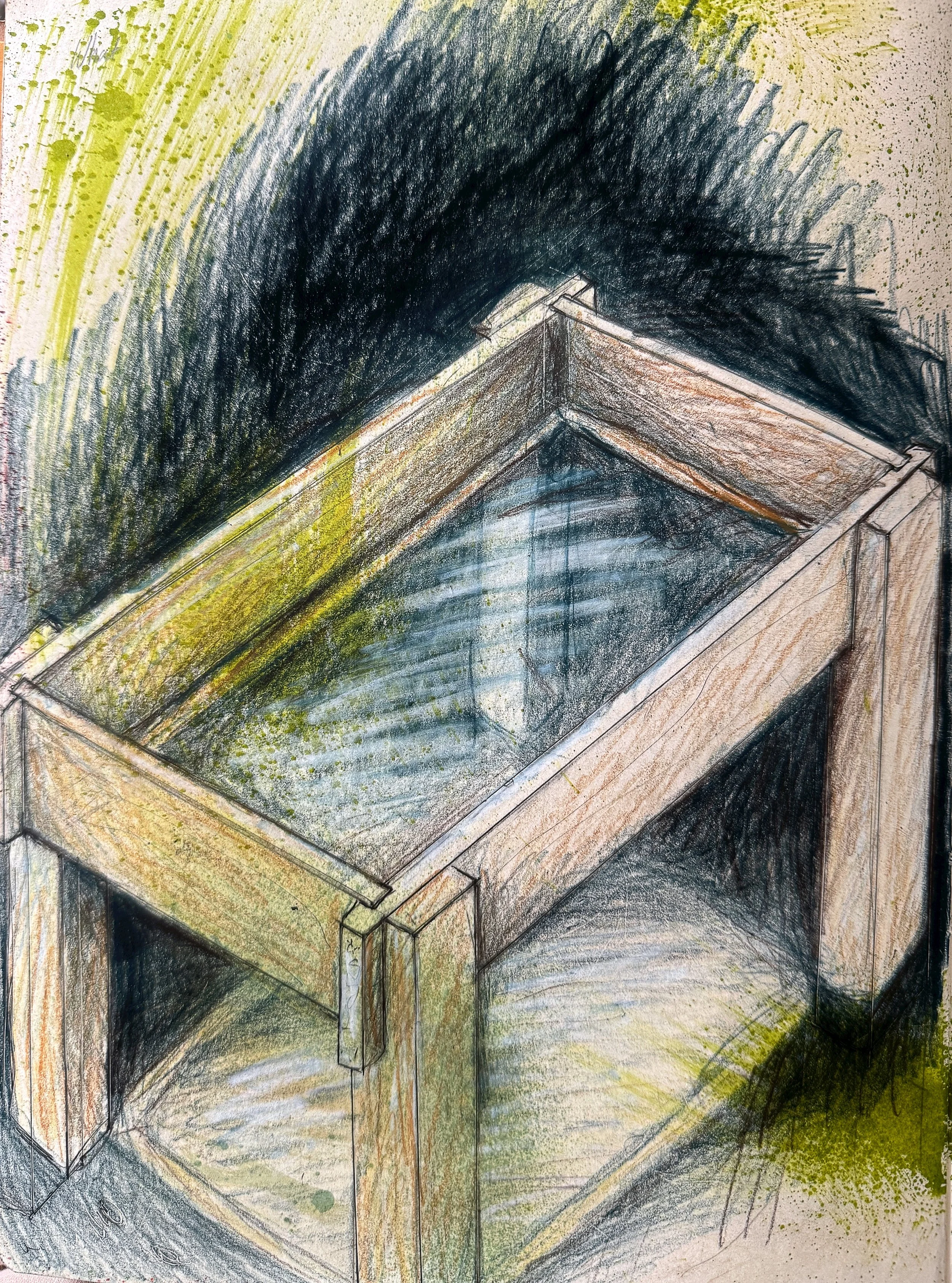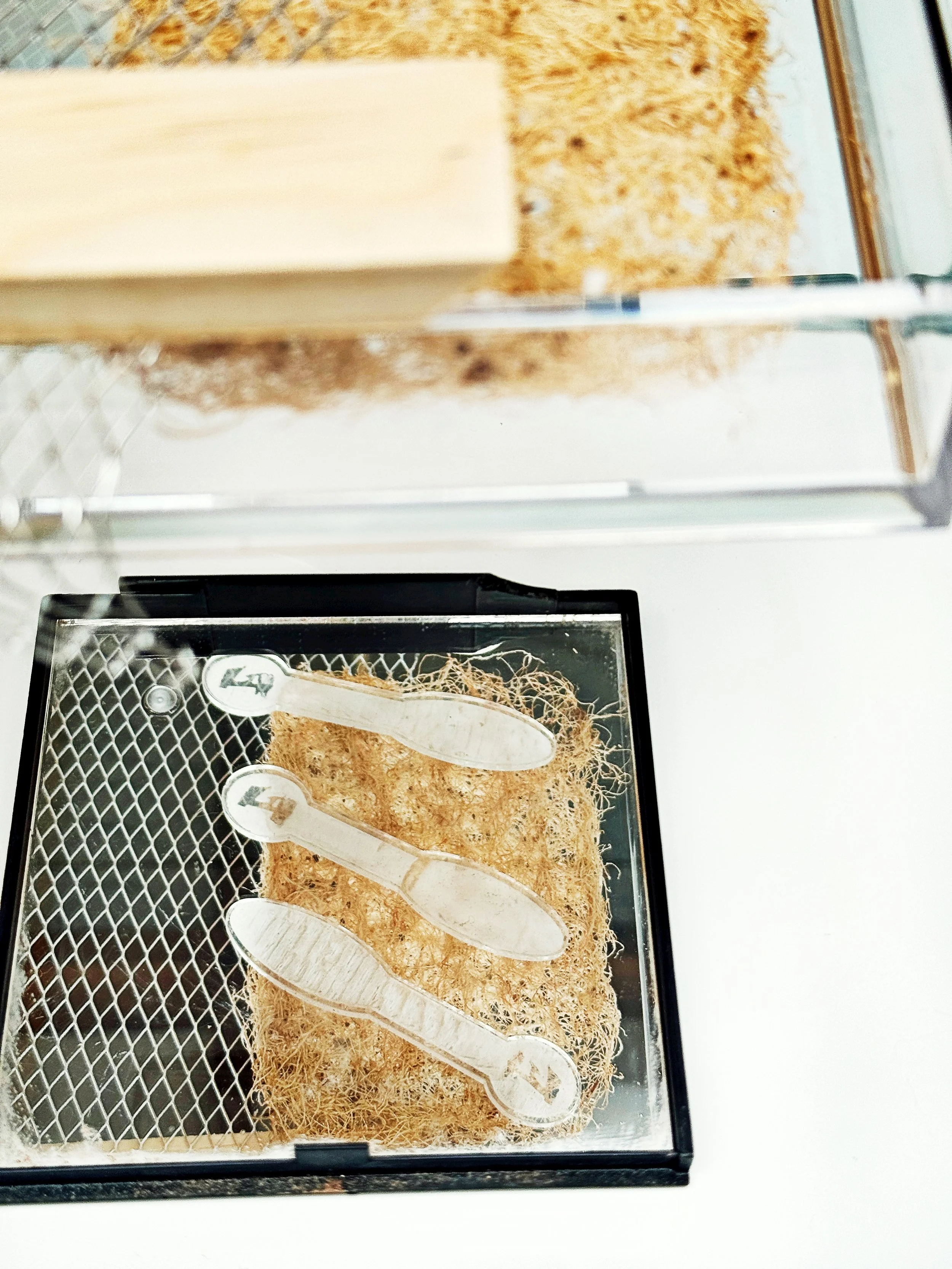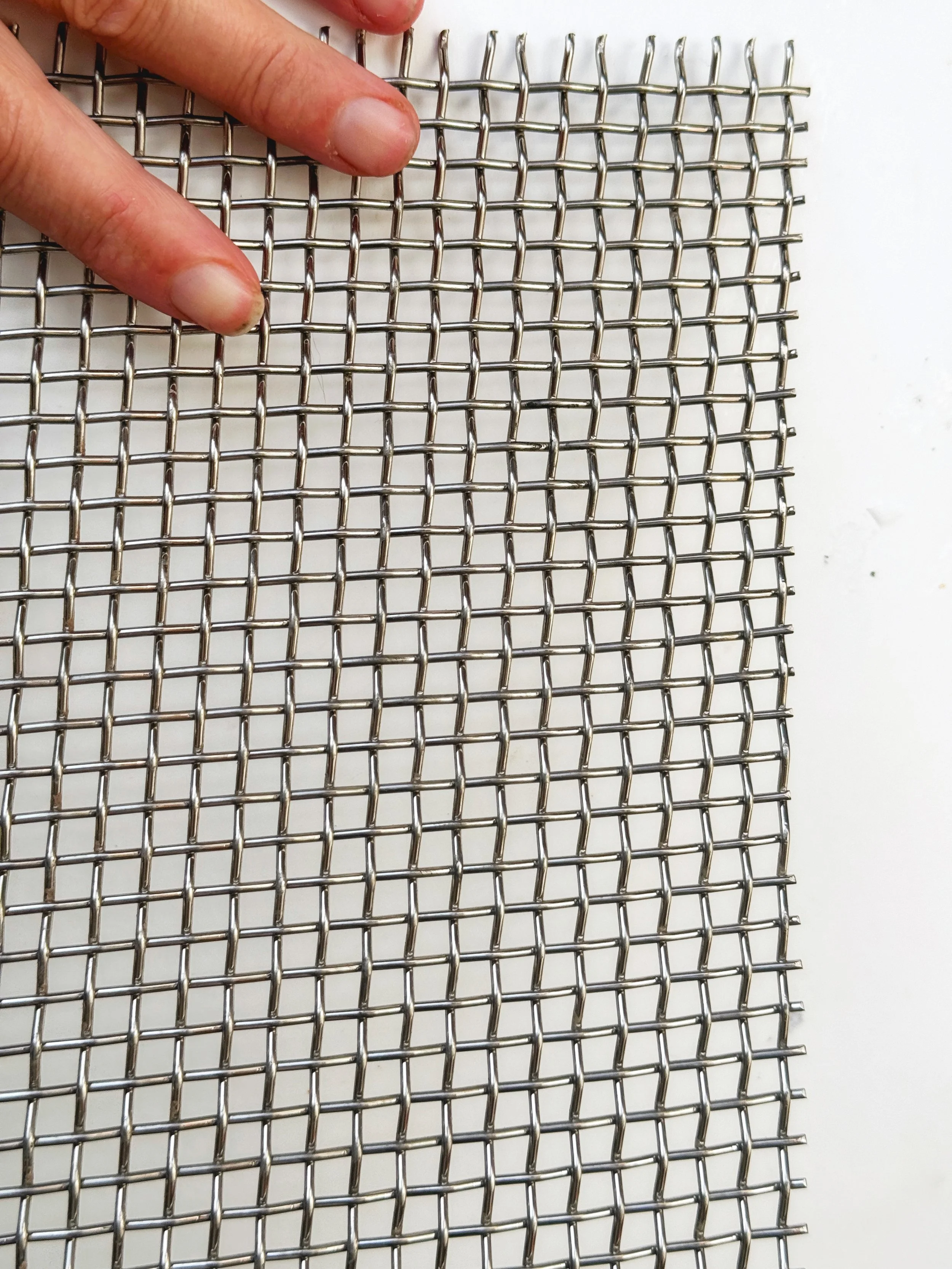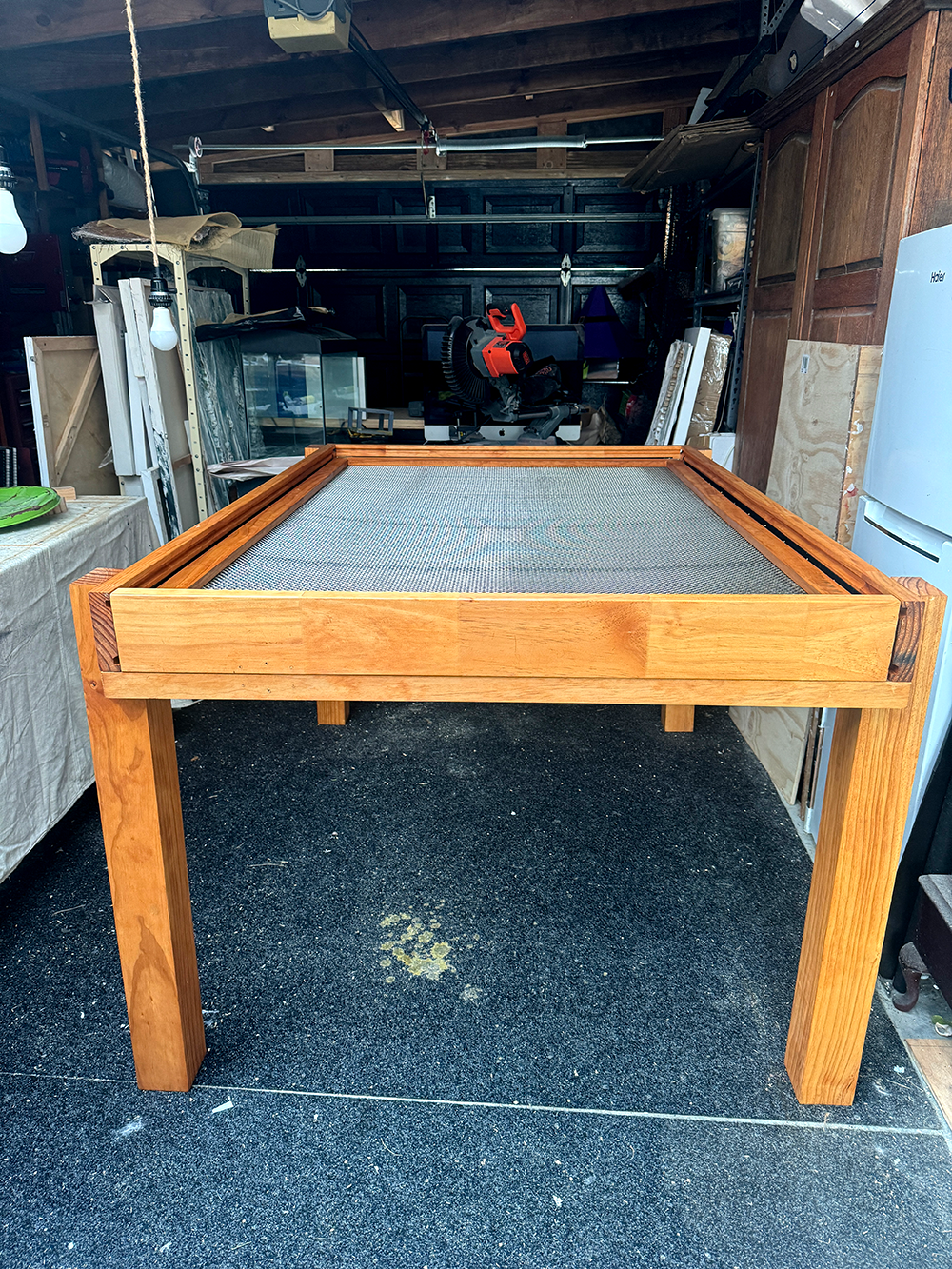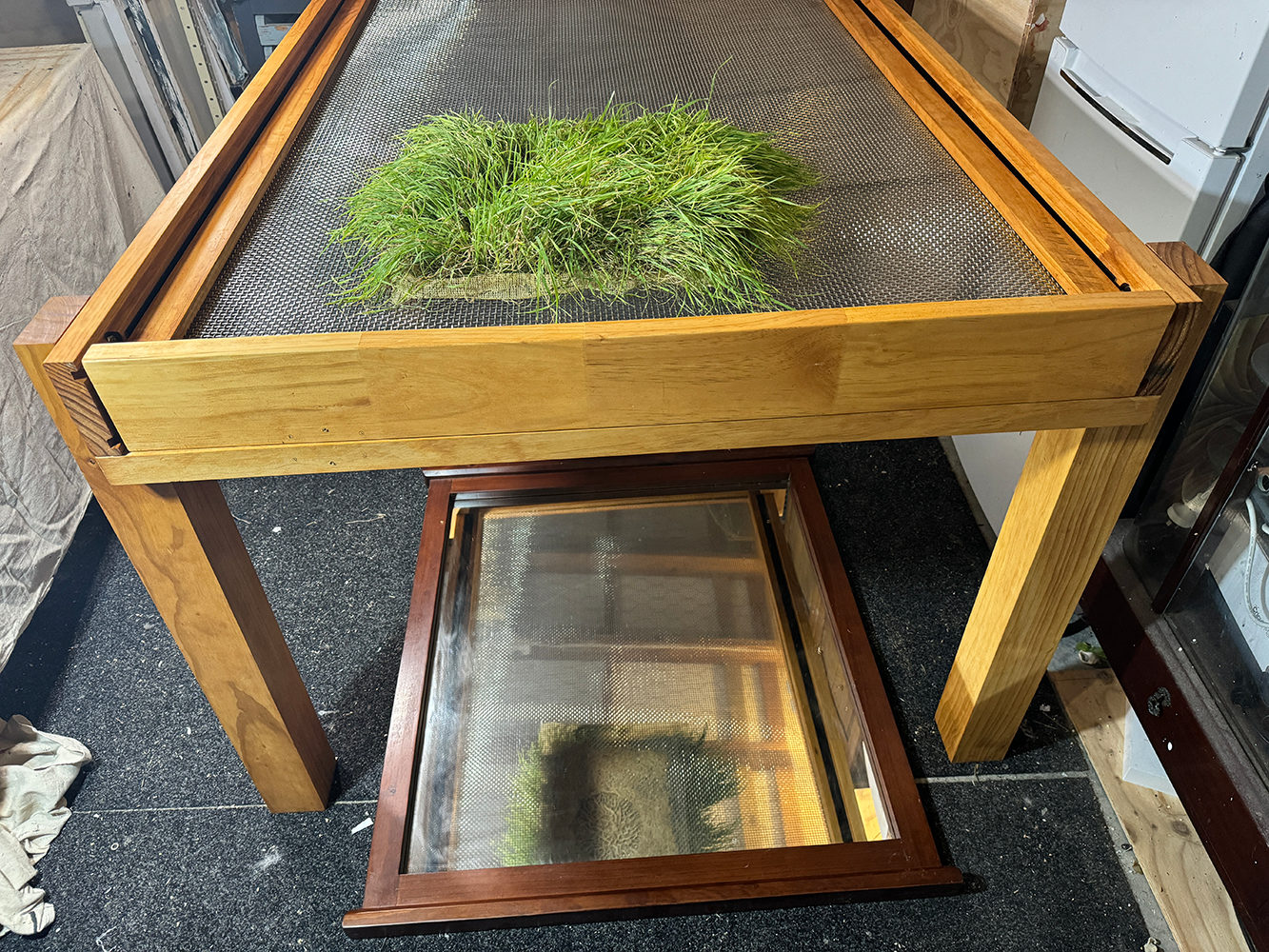Root System Loom
I had an idea to create a type of Root System Weaving “Loom” (earlier post Designing a Root Weaving Loom) and have moved forward with creating it. This has been fairly challenging for me because while although I have some woodworking experience, I am not highly skilled. I will give things a go; however, because this is my own design and not a contraption that exists (as far as I know), I have had to consider the components, dimensions, and transportability fairly carefully. Frankly, its been a complete mind f8*k so I was absolutely stoked when I assembled it and everything fit as I intended.
The table measures 1645mm long x 1110mm wide (with legs 1200mm) x 900 high. It is constructed of timber with powder-coated aluminium support rails. These rails hold a timber with a stainless mesh frame, which is 1580mm x 1045mm and a water reservoir of the same dimensions, which is constructed of timber with a clear polycarbonate insert. The water reservoir in this iteration is a mock-up, as I am getting this element manufactured from clear acrylic, which will be more stable. I wanted to ensure the idea and dimensions would work before committing to the making. One of the short ends of the table is removable, so the mesh and reservoir can be inserted or removed as required. The legs can also be unbolted for transport.
The frame works well; however, I decided that the inserts needed to be half the length, which would make the size more manageable and lessen sag. The stainless mesh was a bit heavier gauge than I anticipated, so it is heavy. Splitting the mesh into two will mean it is more sound with less stress on the timber surround. I will also be able to create two root systems at the same time, which will have dimensions of 1000mm x 745mm each.
The loom will have two additional inserts, which will slide into grooves routed into the timber above the frame mesh and below the water reservoir. The upper one is black 4mm acrylic, which will create darkness for the seeds for approximately 5 days until germination. The lower one is a mirror 3mm acrylic, which can protect the root system from too much light but can also be placed on the floor so the root system's growth can be observed. The acrylic components are being manufactured this week (w/c 06 May); therefore, I should be able to create and harvest 4 works within this timeframe within the loom.

